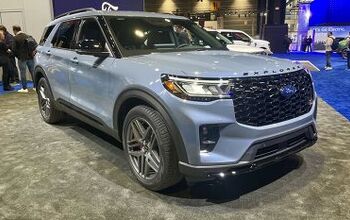Report: Fisker Secures $500M Loan From U.S Government to Build Affordable Plug-In Hybrids

Fisker Automotive, the company that beat both General Motors and Toyota to market with a plug-in hybrid, has been awarded a $527 million loan from the U.S. Department of Energy to develop affordable plug-in hybrids.
The majority of the loan will go towards building a new generation of plug-in hybrid electric vehicles (PHEVs) that will cost $39,900 after tax credits. The remainder will go towards final development of the Karma PHEV. The Karma uses a technology similar to the Chevy Volt, but is considerably more powerful, allowing the 403hp luxury car to hit 62 mph in six seconds while getting 67 mpg. It can drive on pure electric power for up to 50 miles, with a total extended range of 300 miles.
The loan is part of the Department of Energy’s $25 billion Advanced Technologies Vehicle Manufacturing Loan Program.
Fisker is calling its new initiative Project NINA, after the ship belonging to Christopher Columbus, symbolizing a move from an old word to a new world.
“This conditional loan represents a significant step in America’s future,” said Henrik Fisker, CEO. “With it Fisker Automotive can rapidly develop affordable clean cars that satisfy our passion for driving and help restore the U.S. as an auto industry leader.”
Fisker says the project will create or save at least 5,000 jobs among U.S. auto suppliers and in manufacturing the hybrids.
[Source: Yahoo]

With AutoGuide from its launch, Colum previously acted as Editor-in-Chief of Modified Luxury & Exotics magazine where he became a certifiable car snob driving supercars like the Koenigsegg CCX and racing down the autobahn in anything over 500 hp. He has won numerous automotive journalism awards including the Best Video Journalism Award in 2014 and 2015 from the Automotive Journalists Association of Canada (AJAC). Colum founded Geared Content Studios, VerticalScope's in-house branded content division and works to find ways to integrate brands organically into content.
More by Colum Wood






























Comments
Join the conversation